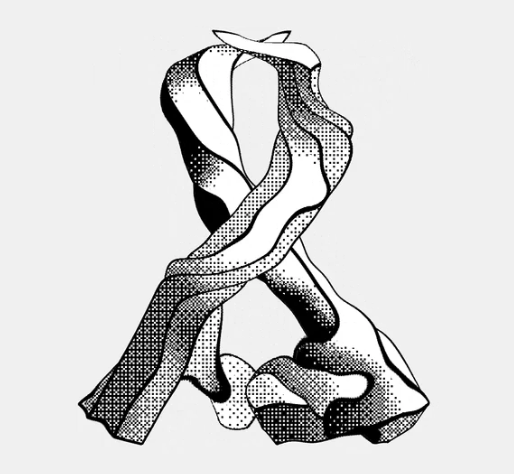I’m considering switching to linux but I’m not a computer savvy person, so I wanted to have the option to switch back to windows if unforeseen complications (I only have 1 pc). Is it just a download on usb and install? And what ways can I get the product key or “cleaner” debloated versions.

You can install Linux on a flash drive to test it out. Or spend $50 on a SSD and just have both

It’s not the fanciest solution, but if you’re really not sure what you’re doing, not wiping out your Windows in the first place could be the best option.

I mean physically wiping out the disk is. Yes.

You dont even install. You download, write to usb and try linux.
Give it a good hour or more, trying to do a couple basic things like browsing the web, using some apps.
If you find yourself liking the experience, hit install and go dual boot. You can then decide on every boot if you need windows or linux today.
In case you feel like getting rid of windows, you can just disable the item in the boot menu (tutorials online) i guess.
So as you see, there are many failsafes which you can use to not get stuck without a computer that you understand.
Have a good one.

I would agree way this, with one caveat: Does OP plan to game on Linux?
Gaming on Linux has come very far, but it’s not perfect and not something you can really get a feel for in a USB live environment. At that point rather to dual boot and try sticking with Linux for a while.

Uhm… you do realize that dual booting is step two in what I said right?

You’re right, my bad.

There’s no turning back…

WOAA-OH
MY PRESENCE FADES TO BLACK

Install Linux in a VirtualBox virtual machine to try it out. No change to your existing Windows system is needed.
Better: install it in a virtual machine on a second hard drive: if you like it and you’re ready to switch, switch to booting the real Linux hard-drive and turn the Windows hard drive into the virtual machine, to use within Linux when you need it.
If you switch to Linux, this will happen:
-
It’s gonna be tough: it’s a different system, you’re not used to it. Like everything else, it’s hard to change and get used to new things. So realistically expect some learning curve and some pain. It’s normal.
-
If you give it an honest shot but you decide Linux is not for you, you’ll switch back to Windows. You’ll be back to your old normal, but you’ll start to notice how infuriating and spirit-crushing it is a lot more, having been exposed to a non-insane, user-centric OS for a while. And then you’ll be that much sadder in Windows and you’ll wish you had the best of both OSes - which you can’t.
Just be aware than exposure to a non-Windows OS will probably make you hate Windows more and make your life in Windows ever slightly more miserable, even if you don’t stick to the non-Windows OS.

If you have windows pro, education, or enterprise I recommend Hyper V instead. It’s much faster because it’s a type 1 hypervisor instead of a type 2 like virtual box

I haven’t used Linux in a decade and half (I know myself and I wouldn’t reboot once done gaming and I have one game that is not just wine or whatever and done and it’s my main one) and I still miss things from it. The first few PCs I used were Linux. It just sticks with you.
-
- CaptObvious ( @CaptObvious@literature.cafe ) 10•10 months ago
It isn’t all that difficult to install a dual-boot setup, so you can choose at startup which OS to use.

Bingo. I haven’t had a windows install mess up my bootloader in a while, granted I haven’t booted my windows partition in a while either. As long as you create a separate partition for the bootloader, it’s stupid easy to fix with a liveusb.
- CaptObvious ( @CaptObvious@literature.cafe ) 1•10 months ago
I’d forgotten about the bootloader. I only dual booted with XP for a few months before wiping the drive and dedicating that machine to Mint.

Get a second SSD, install there

I know it’s not what you’re asking but switching back is truly horrible, I have to use w11 at work and I hate every second of it. One drive shoven down your throat, Xbox stuff wants to install something everytime I update, installing stuff from random exes found on websites (I know the store exists but it sucks if your needs are not “I want to install candy crush”), changed something in your path variable? Reboot! Wtf? I really hope microsoft abandons windows in favour of its cloud apps for people who need it and lets Linux distros rule the desktop world

I really hope microsoft abandons windows in favour of its cloud apps for people who need it and lets Linux distros rule the desktop world
This only born more commercial distros and make macos and chromeos span even more.
Open source benefits when there are so many companies competing.

Technically it’s easy. You just leave your Windows install where it is (assuming you have enough disk space) and it’ll be waiting there ready to embrace you again when you decide to give up on freedom and come crawling back. Psychologically it could be a challenge.

Easy in terms of installing windows? No harder than a normal install in any situation. Easy in terms of usability? Can’t even imagine ever trying. Have a hard enough time using my windows cloud r at work.

Install: easy.
Seeing how much more annoying it is after using Linux: hard.

ESPECIALLY if you have gotten used to a fancy window manager or custom hotkeys… the amount of times i go “mod+q … oh, right… alt+f4”

Swear, although I’m more of a “mod+shift+q” kind of guy

i use a custom kill script with overrides such as dont kill firefox, and properly kill discord. then $mod+shift+q to use the standard kill as a fallback

Just because no one else is mentioning it, there’s a free tool in github to activate any copy of Windows, that could be on a new machine, a VM, Windows To Go, etc. You don’t need a product key.

Link for those that want to check it out for research purposes.
Edit: It works with Office too


The devs mention that as the recommended method on their GitHub (which I also recommend as it’s way easier)
Activating Windows is so easy nowadays

Iirc, Microsoft themselves were advocating the method I mentioned when users were having issues (I can’t recall where I read that though)

If your PC already has Windows, you can create an installation USB key.
There’s no need for a Windows key because your system is already registered with Microsoft. It creates a unique ID from your computer’s peripherals.
So just pop in the USB key, boot from the usb key and follow the instructions. To boot from the USB key you might need to go configure the boot order in your BIOS.

This is the best answer I’ve seen in this whole thread. You’re right that the key is not needed. Microsoft identified your system components and did the original activation based on the hardware you’ve got on your computer. All you need to do to bring back a licensed copy of Windows is to reinstall it.

This seems like the right answer to me. Whether or not you decide to dual boot, make one of these USB keys so you can recover if something goes wrong.

Windows, in the past has been known to sometimes overwrite the Linux boot loader after a windows update, so be careful with that, since windows assumes no other os exists in the universe. Depending on your windows version, it might not be a bad idea to backup the license key. Recent versions store your computer’s information in the cloud, so unless you change a lot of components, it should reinstall without much hassle. But it doesn’t hurt to extract the key just in case. Microsoft gonna Microsoft. There are tools for this. E.g. jellybean key finder (or something like that).
Depending on the distro, it might help to disable secure boot in the uefi bios.
That being said, take it one step at a time. Don’t try to recreate everything you were doing in windows right off the bat. Get comfortable with the desktop first. Try different apps for certain tasks. If you have an Nvidia GPU, the experience can vary greatly between different distros. As others have mentioned, most distros have a “live environment” on the installation cd, which you can test to see if your hardware is recognised straight away. That being said, don’t feel like you’re married to a specific distro. Most Linux users will distro hop quite a bit, before they settle on one that just feels right. And even then they might change again after a while, if they get bored.

Windows, in the past has been known to sometimes overwrite the Linux boot loader after a windows update.
Linux (ubuntu) do that pretty often too, people just don’t notice it because they’re unlikely to be running any other bootloader if they have Linux’.

Yes, but if e.g. openSuSE installs its Grub 2 on top of Ubuntu’s Grub 2, you end up with a different theming. If Windows overwrites the bootloader, the Linux boot options are gone.

If you’re nervous about the switch consider dual-booting. Then you’re not fully committed to the switch & you can have your old Windows system back whenever you want it.
Main steps are:
- Run a defrag on your Windows machine to physically consolidate all your Windows data to one area.
- Break that partition into two (Linux will go one the new empty side)
- Install Linux from a USB as normal, but don’t choose to wipe your drive completely. Choose a manual option instead where you specifically indicate your intended Linux partition from above.
- Optional: Once installation is complete you can set up another partition to hold files which can be available to both OSs.
- Boot into Linux & define the remaining unused space in the Linux partition as a new NTFS partition & give it a name which makes it obvious what it is (i.e. “sharedspace”)
- Then boot into Windows and move the existing data you’d like to share between OSs here (work documents, movies, music, etc.)
Some useful links:
- Video on setting up a dual boot
- Howtogeek used to have a great walkthrough for doing this but I’m getting a 404 error when I try to follow the link now :(
- Optional: Setting up Linux symlinks to point to the shared space partition

Dual booting is more complex and should be avoided if possible. If someone doesn’t like Linux they can just go back to Windows. I dual booted for years and I can say it was totally useless.

I would argue that it is better to have two separate drives for the installation. It simplifies things for non tech savvy people, and I believe Windows has less of an opportunity to mess with your linux install, such as messing with the efi partition.

THIS all fucking day for new and even experienced users. Setting up a dual boot is fairly easy. But the moment you decide that you just need Windows (mostly new/non-tech users) and delete the Linux partition. Shit will break booting and lead to so much panic and/or frustration just getting Windows booting again. And that ignores the additional fuck-ups that can happen with just making a small mistake doing anything with partitions no matter the OS. It is much less frustrating to just disconnect the second drive in a desktop (or just format the drive and have as a data drive). Or to just swap one drive for another in a laptop with one drive bay/slot. Opening a laptop might be annoying depending on the model.
But at least your data and OS won’t be lost. Lots of people can understand using a screwdriver and spudgers while watching a video and some care. But lots of video and written guides for complex software can be worse. Lots of my frustrations with Linux guides over the years has to do with some steps being just left out due to the person(s) showing or writing it just assume certain steps as being super “obvious” or “common sense.” Though some folks are at least good at pre-facing stuff as assuming certain levels of knowledge. So it is easier to know that I might need to also research whatever they mentioned.
And if someone is experienced, it is still good to keep your OSes on physically different drives. Reduce the amount of problems that can come from a drive going bad and taking both (or however many) OSes down together. Of course backups are to be made for reasons that include a drive failing. But shit happens, and minimizing impact and the work needed to get everything working again is always a good idea. It is also nice to know that if you get the itch to distro-hop, you can just nuke the one drive without worry as much as you want. Keep your “I need to know this won’t be impacted” drive safe, and your play drive liquid.
- AnAnonymous ( @AnAnonymous@lemm.ee ) 5•10 months ago
If you have a big storage device you can just partition it and have dual boot, or if you need to use windows stuff you can always virtualize it with Virtualbox for example.
Answering you question, you just need to download the windows iso and use MAS(google it) to activate windows/office permanently. But anyway nowadays isn’t required to activate windows unless you want to change how your desktop looks.
